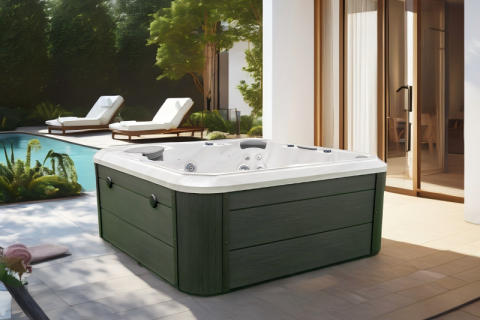
- Home
- >
News
When an outdoor spa hot tub is in standard mode, the system strives to maintain the set water temperature, which means the heater will activate frequently to compensate for heat loss. Energy-saving mode, however, does reduce electricity consumption by reducing the heater's operating time or power consumption.
To ensure clean and healthy water, whirlpool spa hot tub water quality management requires the assistance of specialized tools. The following are some common and essential tools: 1. Water quality testing kit 2. Water filter 3. Pump cleaning kit 4. Descaling agent 5. Chemical dosing kit
The water temperature maintenance time of a small outdoor hot tub is closely related to the ambient temperature. If the ambient temperature is low, the water temperature in the spa hot tub will gradually drop due to heat loss. Especially in cold winter months, the water temperature will drop faster than in warm summer months.
There's no absolute answer; it depends on several key factors: · Will you continue to use your spa hot tub during the winter? · Are winters in your area severe enough to cause frequent freezing? · Can you guarantee reliable power and properly maintained equipment? · Can you afford to completely drain and winterize your equipment?
The chlorides and peroxides in pool shock have strong chemical activity. These ingredients may cause corrosion and damage to spa hot tub pipes, nozzles, heating systems and other equipment at high temperatures.
Escherichia coli is a common intestinal bacteria that normally lives in the human intestine. However, when the water quality is poor, intestinal bacteria can enter the bathtub through unclean water sources and may even be spread through the bathtub's filtration system.
The strong water flow of the whirlpool spa hot tub has a certain impact on the skin surface, which may form micro-injuries that are invisible to the naked eye. Combined with the decreased immunity of diabetic patients and potential microbial contamination in the water, this micro-injury is very likely to develop into deep skin infection or cellulitis.
Whirlpool hot tub is actually a special type of spa hot tub. Its main feature is that it creates a whirlpool-like water flow effect through a built-in water pump and nozzle system, forming strong water flow and bubbles, thereby providing users with a deep hydrotherapy massage experience.
Possible reasons for feeling weak after using a whirlpool spa hot tub: 1. The effect of hot water on blood pressure 2. Imbalance in body temperature regulation caused by excessive water temperature 3. Fatigue caused by excessive relaxation 4. Increased burden on the cardiovascular system 5. Weakness caused by hypoglycemia 6. Dehydration and electrolyte imbalance
A heating system with a power of 3kW may take 6 hours to heat a 2000-liter bathtub water to 40°C, while a heating system with a power of 6kW may only take 3 hours. When choosing a bathtub, users can choose the appropriate heating power according to their needs.
· Small bathtub: suitable for 2-3 people, suitable for families with small space or occasional use. · Medium bathtub: suitable for 4-5 people, more suitable for most families, and can meet the needs of family members or relatives and friends gathering. · Large bathtub: suitable for more than 6 people, suitable for families with more family members or frequent use needs.
It is not recommended. Some ingredients in bath balls may cause the formation of a grease layer in the water, which will affect the heating efficiency of the spa hot tub. When there is an oil layer on the water surface, the heat may not be evenly distributed, making it difficult to regulate the water temperature stably.












